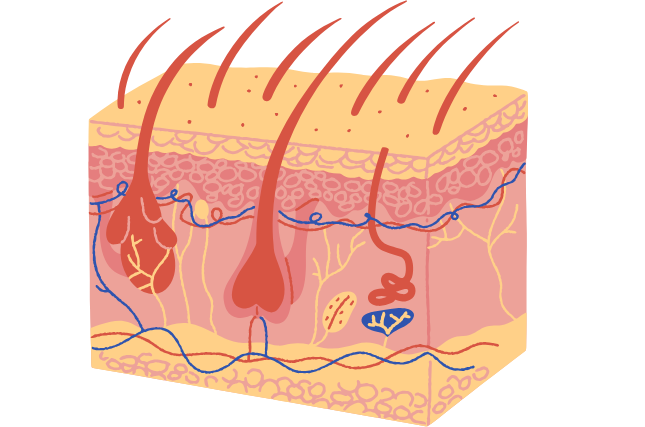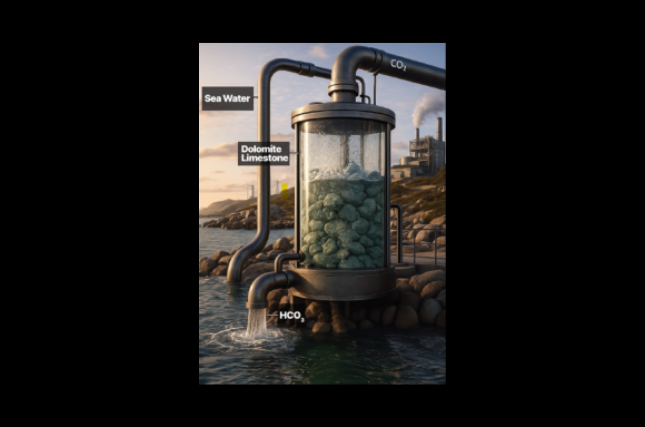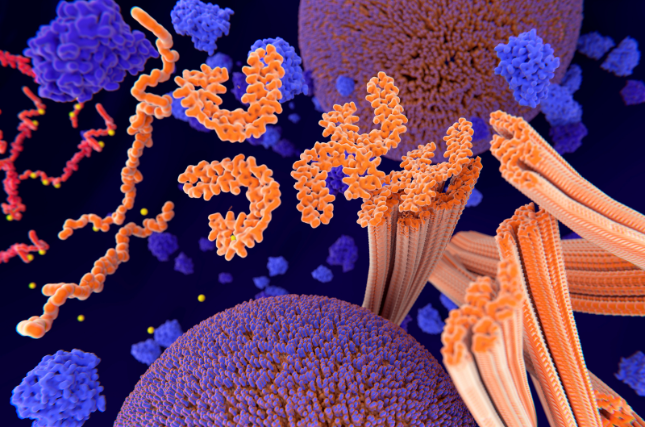
November 7, 2025 – A new, rapid imaging technique that reveals how drugs move through the skin has been developed by researchers at the Hebrew University of Jerusalem (HU).
The study, led by Dr. Katy Margulis of the HU School of Pharmacy and published in Small Science, introduces a rapid imaging technique that allows researchers to visualize how drugs move through and settle in the skin’s layers without dyes. The new method combines mass spectrometry imaging (MSI) with an automated computational tool that can analyze drug distribution within a skin sample, which takes minutes instead of days. The tool segments the tissue into distinct layers and maps where the active ingredient lands, providing a clear visual of drug permeation depth without any need for chemical labeling.
The cutting-edge approach could transform how we test and design topical medications, from antifungal creams to anti-aging serums.
Delivering drugs through the skin requires extreme precision. Some treatments must reach deep into the dermis to enter the bloodstream, while others, like antifungal creams or acne treatments, need to remain close to the surface, targeting a specific sublayer of the epidermis. Until now, measuring exactly how far a compound permeates the skin has been a tedious process, relying on indirect fluorescent methods.
“This approach gives us a clear, label-free snapshot of where a drug actually goes once applied to the skin,” says Dr. Margulis. “It allows researchers and developers to optimize delivery systems quickly and with much greater accuracy.”
To test the method, the team examined three nanoscale drug delivery systems for terbinafine, a common antifungal medication, each designed to reach a different depth within the skin. Using their new imaging process, they compared how effectively each system delivered terbinafine and discovered striking differences between the systems in depth and extent of drug permeation as well as the drug’s skin distribution patterns. This can enable precise tailoring of the delivery system to both the drug and the skin condition.
The innovation also supports kinetic research, allowing scientists to track how fast and how deep a drug moves through the skin. “We can now monitor drug absorption in near real time,” says Dr. Margulis. “It opens the door to time-sensitive treatments and more precise dosing. Ultimately, it will help bring better treatments faster to patients.”
Beyond antifungal therapy, the new method could improve the safety and precision of corticosteroids, retinoids, and other topical drugs, as well as enhance cosmetic and transdermal treatments tailored to specific skin conditions. The study not only enhances pharmaceutical development but also advances the broader goal of precision medicine, which aims to tailor treatments based on individual biology. By making it possible to map drug distribution so rapidly and accurately, the new method could eventually support personalized skincare or medical creams adjusted for a patient’s specific skin type or condition.
The research paper titled “A Rapid Assessment Approach for Skin Stratum-Targeted Drug Delivery Systems Using Mass Spectrometry Imaging and Spatial Clustering” is now available in Small Science and can be accessed here.
Researchers:
Ravit Yakobi Arancibia1, Einav Bentov-Arava1, Anna Morshin1, Jhonathan Elia2, Hiba Natsheh1, Yael Levi-Kalisman3, Rotem Ushki1, Anna Elia4, Elka Touitou1, Katherine Margulis1
Institutions:
- The Institute for Drug Research, the School of Pharmacy, Faculty of Medicine, The Center for Nanoscience and Nanotechnology, The Hebrew University of Jerusalem
- Department of Plastic Surgery, The Hadassah Medical Center, Hebrew University School of Medicine
- Institute of Life Sciences and the Center for Nanoscience and Nanotechnology, The Hebrew University of Jerusalem
- Department of Pathology, Faculty of Medicine, Hadassah Medical Center, The Hebrew University of Jerusalem





